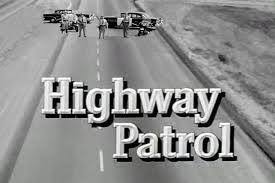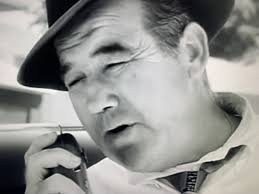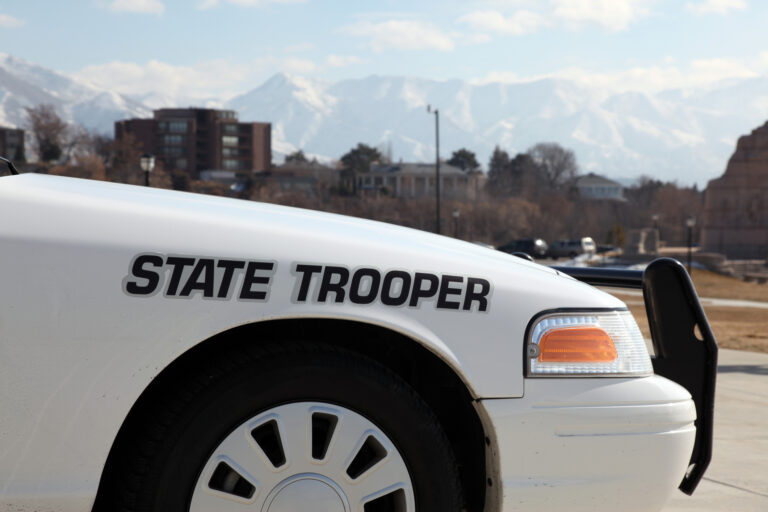
Troopers are highly trained police officers, and the resources available to them are considerable.
~ Barry M. Baker Tweet

Detective Lieutenant Barry M. Baker (ret.) is a 32 year veteran of the Baltimore Police Department.
State police agencies in the United States were formed for various reasons. The most common was the need for statewide traffic enforcement. The modern trend is to designate these agencies as a Division under a state’s Department of Public Safety. These statewide law enforcement agencies are designated as State Police; Highway Patrol, or State Patrol.
Hawaii is the only state that has no state police force.
Trooper is the common designation for the police officers in these state agencies. Troopers are unique among other police officers in a state, because troopers have statewide jurisdiction. You won’t see state police patrolling in cities or towns where local police departments provide police services. However, troopers may respond to assist local police departments for any number of reasons.
In many rural areas of the United States where sheriff or county police patrols do not exist, state police are the first responders. Troopers are highly trained police officers, and the resources available to them are considerable.
Titles and Rank Insignias
State Police rank insignias in 49 states of the United States are similar in some ways and unique and varied in other ways. For example, the Commissioner of the California Highway Patrol is the only Top Cop to wear five stars. The spread eagle Colonel’s insignia is the most popular; it’s worn by 38.
The insignias break down like this: 1 Five Star; 5 Four Stars; 3 Two Stars; 2 One Star; 38 Colonels; One Lieutenant Colonel.
The Top Cop title also varies. Superintendent leads the list with 19 followed by Director with 11. Chief comes in with 6 and Commissioner with 7. Administrator; Chief of Patrol; Chief of Police; Commander; Commanding Officer; Deputy Commissioner; Patrol Commander all come in at one each.
The color of the top rank insignia down to Lieutenant is either gold or silver except for Lieutenant Colonel which is always silver to distinguish it from Major which is always gold in color. The gold color insignias are the most preferred among the agencies.
Michigan has a unique insignia for the rank of Inspector which sets above the Lieutenant rank. It’s a light gray bar with a narrow vertical blue stripe down the center of the bar (U.S. Army W-5 Chief Warrant Officer).
When it comes to the Sergeant and descending ranks, the stripes (chevrons) are mostly the standard yellow/gold stripes; however, this too varies. New York has black stripes on a gray background. Roade Island has red stripes on a black background. North Carolina has black stripes on a gold background. Vermont is the only agency where the chevron insignias are worn in the inverted position.
Alabama - Alaska - Arizona - State Police

Alabama Highway Patrol. The Highway Patrol Division includes 7 troops made up of 17 posts, the Motor Carrier Safety Unit, and the Communications Unit. Highway Patrol accounts for approximately 65 percent of the arresting officers within the agency. Troopers patrol approximately 69,500 miles of rural roadways in Alabama. They are responsible for motor vehicle law enforcement, rural traffic crash investigation, and special duty performance during emergencies. (Wikipedia)

Alaska – Division of Alaska State Troopers. The Division is comprised of posts assigned to four geographic detachments. They provide patrol, enforcement, and search and rescue to all areas of the state. The Division’s major components are the Alaska Bureau of Investigation and Judicial Services. The ABI investigates major crimes, and it enforces bootlegging and illegal drug distribution throughout Alaska. Judicial Services is responsible for prisoner transports and providing security for Alaska courts. (Wikipedia)
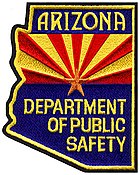
Arizona State Troopers – Arizona Department of Public Safety. The department is headquartered in Phoenix, but it also operates out of local offices spread throughout the state’s 15 counties. With nearly 2,071 full-time employees, the agency provides support and operational objectives including traffic safety and criminal investigation. As of 2018, there were 1,171 sworn employees and 900 professional staff. (Wikipedia)
Arkansas - California - Colorado
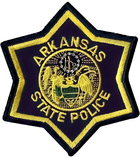
Arkansas State Police. There are five police divisions each commanded by a Major or Captain. They are subordinate in the chain of command to one of two Deputy Directors and the State Police Director. Each division is typically sub-divided into supporting units with specific responsibilities. The command authority of the department’s Highway Patrol Division is divided into two regions. Troops G thru L are under the authority of the Western Region Commander. Troops A thru F comprise the Eastern Region. (Wikipedia)
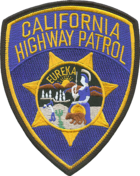
California Highway Patrol. The Highway Patrol was created in 1929 to provide uniform traffic law enforcement throughout the state. The safe, convenient and efficient transportation of people and goods on the highway system is still the primary purpose. The California Highway Patrol is the largest state police agency in the United States with 11,000 employees. Over 7,600 are sworn officers. (Wikipedia)
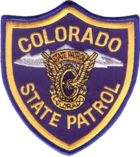
Colorado State Patrol. CSP began as a “Courtesy Patrol,” charged with enforcing vehicle laws and providing protection to the governor. It has transformed into a multitude of public safety specialties. In addition to expertise in traffic safety, the CSP leads in commercial motor vehicle enforcement, hazardous materials routing and rule making. Specialized enforcement consists of aviation, homeland security, communications, immigration enforcement, investigative services and more. (Wikipedia)
Connecticut - Delaware - Florida - State Police

Connecticut State Police. Since 1903, the CSP has provided a full range of law enforcement services to the State of Connecticut. There are currently 11 troops located throughout the state. State Police troopers provide primary law enforcement services in 82 of the 169 municipalities in Connecticut. CSP provides major crime, emergency services, cause and origin investigations and traffic and truck enforcement to the entire state. (Wikipedia)

Delaware State Police. The idea for a state police organization was first considered in 1906. It was not until 1923 when the DSP was created. The first traffic enforcement officers were given the title of Highway Traffic Police in 1919. H.T.P. consisted of one officer whose sole function was to patrol the Philadelphia Pike near Wilmington. In the following year the force was increased to three men and three motorcycles. Today, the DSP consists of 36 units and sections including 8 Troops covering the entire state. (Wikipedia)

Florida Highway Patrol. The FHP was established in 1939, and by the end of 1940 the force had 59 patrolmen. In that first year, they patrolled 1,938,564 miles of roadway and investigated 1,000 crashes. In 2020, the FHP patrolled 49,500,000 miles and investigated 155,353 crashes. The Florida Highway Patrol is authorized for 1,982 sworn positions and 514 non-sworn positions for a total of 2,496 full time employees. (Wikipedia)
Georgia - Idaho - Illinois

Georgia State Patrol. GSP troopers investigate traffic crashes and enforce traffic and criminal laws on the state’s roads. Georgia State Patrol was the first agency to equip all of its patrol cars with dash-mounted cameras. Each trooper on patrol in Georgia has specialized training in the Pursuit Intervention Technique (P.I.T.). This method allows Troopers to end pursuits quickly by putting the fleeing vehicle in a controlled spin. (Wikipedia)
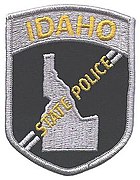
Idaho State Police. ISP is responsible for enforcing traffic laws, investigating traffic collisions, assisting motorists. It conducts criminal interdiction on the state’s interstate highways, state highways and secondary highways. The patrol force provides local police agencies and sheriff’s offices with assistance in performing other law enforcement duties as required. (Wikipedia)
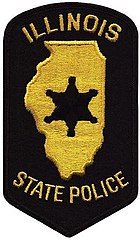
Illinois State Police. The ISP began in 1922 with eight men as highway patrol officers. Their equipment consisted of surplus World War one motorcycles and uniforms. The officers enforced weight laws to protect “hard roads” from damage caused by overweight trucks. Today, the ISP has 1836 sworn officers and 1084 civilian employees. Its Division of Criminal Investigation serves through 8 investigative zones spread across the state in support of local law enforcement. (Wikipedia)
Indiana - Iowa - Kansas - State Police
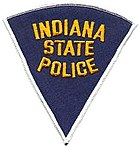
Indiana State Police. The ISP was established in 1933 with sixteen officers. It is now a force with over 1200 Troopers serving in 14 Districts. The Indiana State Police was the first law enforcement agency in North America to authorize the use of the “Drunk-o-meter”. It was a chemical test to determine levels of alcohol intoxication invented in 1938 by Rolla N. Harger, M.D. In 1954, an improved version of the device followed, and it was called the Breathalyzer. It was invented by Indiana State Police Captain Robert F. Borkenstein in collaboration with Dr. Harger. (Wikipedia)
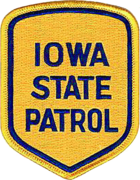
Iowa State Patrol. The ISP has an authorized strength of 455 Troopers serving in sixteen Districts. Its primary mission is the enforcement of motor vehicle laws. In the year 2000, the Iowa Capitol Police Division was placed into the Iowa State Patrol and became District 16. District 16 maintains the security presence on the 167 acre Capitol Complex in Des Moines, and the 6.5-acre Terrace Hill Governor’s Residence, the official residence of the governor of Iowa. (Wikipedia)

Kansas Highway Patrol. The Patrol’s 800 strong Kansas State Troopers, Capitol Police Officers, Motor Carrier Inspectors and civilian personnel make up the KHP. The Patrol’s specialty units are available to assist other agencies across the state. They provide help with tasks such as motor carrier enforcement, aircraft services and Police Service Dog calls. (Wikipedia)
Kentucky - Louisiana - Maine
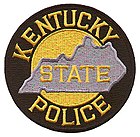
Kentucky State Police. The Kentucky State Police Academy is a 24-week military environment designed to teach Cadets the job skills necessary to perform the duties of a Trooper. Those selected to attend the Academy will receive more than 1,000 hours of training covering all aspects of law enforcement. They include Firearms, Defensive Tactics, Criminal Investigations, Emergency Driving, Strategies and Tactics of Patrol Stops (STOPS), Counter-Ambush, and more. (Wikipedia)
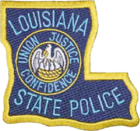
Louisiana State Police. The LSP emerged from a highway commission in 1922 with a force of 16 men patrolling the highways on motorcycles. On July 28, 1936, the two divisions of law enforcement were combined to form a modern, well equipped, and well-trained force known as the Louisiana Department of State Police. Its current status is a force of 1022 men and women. They are responsible for all elements of criminal and highway safety interdiction in the state. (Wikipedia)
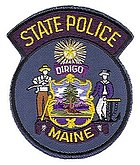
Maine State Police. The Computer Crimes Unit is one of 14 specialized units in the MSP. It is a multi-jurisdictional entity designed to assist law enforcement and prosecutors in Maine. Computer crimes are those in which a computer is used as an instrument in committing, or assisting in the commission of a crime, or where the computer is a target of a criminal act. The Computer Crimes Unit is headquartered at the Maine Criminal Justice Academy. It has primary satellite units in Lewiston, Bangor and Portland. The Unit (along with its primary satellites) has 7 detectives/special agents and 8 forensic examiners. (Wikipedia)
Maryland - Massachusetts - Michigan - State Police

Maryland State Police. Motorcycles were an integral part of the early portion of MSP’s history. The department soon transitioned to mostly cars as departmental vehicles before bringing back the motorcycle unit in the 1980s. Over the past 100 years, the Maryland State Police has continued to evolve as its mission has expanded. Today’s department includes many specialized units designed to serve the citizens of the state. (Wikipedia)

Massachusetts State Police. The MSP serves as the statewide law enforcement agency and maintains investigative, tactical, and support units throughout the Commonwealth. MSP regularly partners with local, state, and federal law enforcement agencies on investigations, operations, and training. Massachusetts is divided into 6 different troop patrol areas for State Police. (Wikipedia)
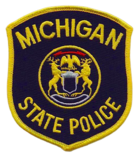
Michigan State Police. The MSP began as a temporary, wartime emergency force for the purpose of domestic security during World War I. On April 19, 1917, Governor Albert Sleeper created the Michigan State Troops Permanent Force. It was also known as the Michigan State Constabulary. This new force consisted of five Troops of mounted, dismounted and motorized units, totaling 300 men. On March 26, 1919, Public Act 26 reorganized the Constabulary as the permanent, peace-time Michigan State Police. (Wikipedia)
Minnesota - Mississippi - Missouri
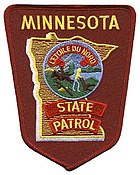
Minnesota State Patrol. The Minnesota State Legislature created the Minnesota Highway Patrol in 1929 in response to the boom of automobiles. The first chief of the Highway Patrol was Earle Brown, who was among the initial force of nine men. Today, more than 600 state troopers provide for safe, efficient movement of traffic on Minnesota’s roadways. Troopers are supported by 295 civilian personnel. Troopers educate Minnesotans about the importance of traffic safety; investigate and reconstruct serious crashes. They conduct flight patrols and search and rescue missions, and they assist other law enforcement agencies. (Wikipedia)
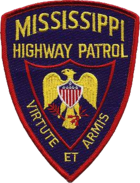
Mississippi Highway Patrol. The Patrol was created in 1938 as the Mississippi Highway Safety Patrol. The MHSP still retains that original title, and their primary mission remains the same. It enforces rules of the road on the state’s roads and highways. The MHSP will assist counties and municipalities in resolving crimes and other law enforcement related issues in their jurisdictions. State Troopers are prepared to respond to statewide emergencies at the request of the Governor. The MHSP also maintains records of more than 2 .7 million state issued documents such as driver’s licenses and firearms permits. (Wikipedia)
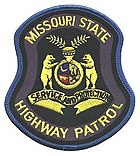
Missouri State Highway Patrol. The MSHP maintains an Aircraft Division consisting of 10 pilots operating 2 helicopters and 6 fixed wing aircraft. The helicopters, due to their enhanced aerial capabilities, assist with searches for wanted and missing persons. They conduct surveillance, marijuana eradication, and assessing the damages from natural or man-made disasters. The fixed wing aircraft aid with traffic enforcement, criminal searches, criminal surveillance, searches for lost and missing children or adults. (Wikipedia)
Highway Patrol - The TV Drama Series
Broderick Crawford worked in 140 motion pictures and television series during his career. His last role was as a film producer who is murdered in a 1982 episode of the Simon & Simon television series. The actor who played the part of the suspected murderer was Stuart Whitman, who had played the recurring part of Sergeant Walters on Highway Patrol.
In 1949, Crawford reached the pinnacle of his acting career when he was cast as Willie Stark. The character was inspired by and closely patterned after the life of Louisiana politician Huey Long, in All the King’s Men. The film was a huge hit, and Crawford’s performance as the bullying, blustering, yet insecure Governor Stark won him the Academy Award for Best Actor.
Crawford died following a series of strokes in 1986 at the age of 74. He has two stars on the Hollywood Walk of Fame, one for motion pictures at 6901 Hollywood Boulevard and another for television at 6734 Hollywood Boulevard. His popularity on “Highway Patrol” led to him being memorialized in the poker game of Texas Hold ’em. A starting hand of a 10-4 (a common police radio code) is nicknamed a “Broderick Crawford”
The Making of Highway Patrol
You can click on this excellent Wikipedia entry that describes the production of Highway Patrol.
Montana - Nebraska - Nevada - State Police
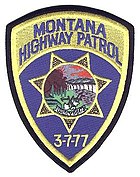
Montana Highway Patrol. The MHP is a force of 240 troopers patrolling highways over 147,165 square miles. MHP is divided into 8 Districts with its Headquarters in Helena, Montana. The Patrol covers great distances to police Montana’s highways. They drive more than 5,500,000 miles, respond to over 70,000 calls for service and issue more than 85,000 arrest tickets. (Wikipedia)
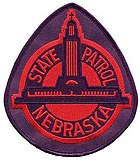
Nebraska State Patrol. The NSP has six Troop Area Headquarters located in Lincoln, Omaha, Norfolk, Grand Island, North Platte and Scottsbluff. The State Headquarters, housing NSP Command and support staff is also located in Lincoln. Across the state more than 700 sworn and civilian employees provide traffic, investigative, administrative and support services. (Wikipedia)

Nevada Highway Patrol. The Nevada State Police was created in 1908 for state level law enforcement resulting from labor strikes in mining communities. Enforcing laws of the roads followed with the mass production of the automobile. The first Nevada State Highway Patrolman was hired in 1923. This officer would travel throughout the state collecting automobile registration fees and enforcing the laws of the highway. Nevada was one of the first western states to have an organized highway patrol function. (Wikipedia)
New Hampshire - New Jersey - New Mexico

New Hampshire State Police. In 1869, a hand written piece of legislation would lead to the formation of the New Hampshire State Police. The NHSP has experienced constant growth and expansion in all areas. This growth includes an increase of sworn personnel to approximately 400 and the creation of highly sophisticated and specialized units. The NHSP operates from seven Troop Stations around the State. (Wikipedia)

New Jersey State Police. The NJSP is a full service police agency. It performs all functions of law enforcement to include crime prevention, investigations and apprehension of offenders. In certain municipalities, the NJSP is the sole provider of general police services. It patrols all state highways investigating accidents and incidents on those highways. The NJSP conducts inspection and enforcement programs essential to highway safety. (Wikipedia)
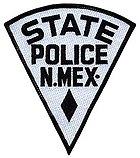
New Mexico State Police. In 1905 the 36th Territorial Legislature established the New Mexico Mounted Police. In 1916, “Pancho” Villa sacked the town of Columbus, New Mexico. The New Mexico Mounted Police patrolled the border to prevent further raids and provide law enforcement. In 1926, Route 66 connected Chicago to Los Angeles, and it ran through New Mexico. 1933 saw the creation of the New Mexico Motor Patrol to enforce traffic laws. As of 2021, there are 671 State Police Officers serving New Mexico. (Wikipedia)
New York - North Carolina - North Dakota - State Police
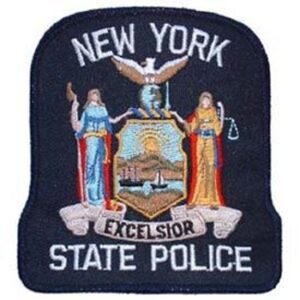
New York State Police. The NYSP is a force of more than 3,500 men and women. Troopers respond to calls for service, and they patrol New York’s roads and highways. The NYSP Bureau of Criminal Investigation (BCI is staffed by over 1,000 investigative personnel. BCI assists local and country police agencies that lack resources for major crime investigations. The NYSP Crime Laboratory System (CLS) provides statewide support to all state criminal justice agencies. It provides analytical and investigative capabilities and expert testimony related to criminal matters. (Wikipedia)

North Carolina State Highway Patrol. The NCSHP’s primary mission is to reduce collisions and make the highways of North Carolina as safe as possible. The State Highway Patrol has more than 1,600 troopers who cover nearly 80,000 miles of North Carolina roadways. That’s more than any other state except Texas. In addition to enforcing the state’s traffic laws, state troopers guide traffic during hurricane evacuations. They re-route traffic around hazardous chemical spills, and they stand ready should any act of terrorism occur. (Wikipedia)
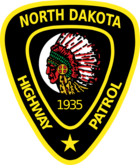
North Dakota Highway Patrol. NDHP Troopers attend the Law Enforcement Training Academy in Bismarck. It is a 22 week program where recruits learn all Peace Officer Standards and Training as well as advanced traffic information. Troopers are assigned to post locations within the four regions upon graduation. Major activities of the Highway Patrol include traffic enforcement, crash investigation, and reporting road conditions. The NDHP enforces laws where state property is involved. (Wikipedia)
Ohio - Oklahoma - Oregon
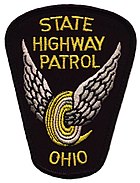
Ohio State Highway Patrol. Patrol General Headquarters is located in Columbus and the state is subdivided into nine districts. Each district is commanded by a captain and each post by a lieutenant. Training is conducted at the Patrol Academy, also located in Columbus. The Patrol maintains a uniformed complement of about 1,600 officers with about 1,000 support personnel. From the ranks of road troopers are a number of officers in specialized positions. Among these are plainclothes investigators; traffic and drug interdiction teams; canine officers and more. The Patrol maintains a special response team comprised of road troopers who are specially trained in weapons and chemical agent use, extraction techniques, and rapid response methods. (Wikipedia)
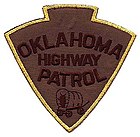
Oklahoma Highway Patrol. The majority of members are assigned to thirteen field Troops, A through M and turnpike Troops, X and Y. These field troopers are responsible for patrolling Oklahoma’s 111,994 miles of city, county, and state maintained roads and highways. Field troopers are first responders to emergency situations from traffic collisions to natural disasters and civil disorders. Troopers provide everyday service to the public, whether it is a motorist assist or promoting Oklahoma to visitors. Troopers are prepared and willing to assist any law enforcement agency when asked and to take the initiative to offer assistance when needed. (Wikipedia)

Oregon State Police. The OSP is a multi-disciplined organization charged with protecting the people, wildlife, and natural resources in Oregon. It enforces traffic laws on the state’s roadways, investigates crimes, conducts post-mortem examinations and forensic analysis, and it provides background checks and law enforcement data. OSP regulates gaming, the handling of hazardous materials, and fire codes. It educates the public on fire safety and enforces fish, wildlife, and natural resource laws. (Wikipedia)
Pennsylvania - Rhode Island - South Carolina - State Police
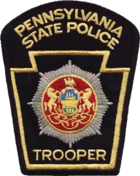
Pennsylvania State Police. The PSP was established in 1905, and it was the first uniformed police organization of its kind in the United States. Today, the authorized strength of the Pennsylvania State Police is 4,730 sworn members. More than 1,850 civilians serve in a variety of roles throughout the department. The PSP maintains six Aviation Patrol Units across the Commonwealth, and helicopters and airplanes fly routine patrol in the entire coverage area. Hangers are situated so that an aircraft’s response time to any location in the coverage zone is within thirty minutes. (Wikipedia)
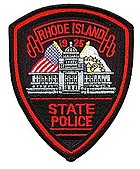
Rhode Island State Police. The Patrol Bureau is responsible for policing the Town of Exeter and all state highways. It investigates crashes and incidents on those highways, and it conducts inspection and enforcement programs. Patrol Bureau Troopers perform all functions associated with statewide enforcement of laws, crime prevention, the pursuit and apprehension of offenders. All tactical related functions and units fall under the Patrol Bureau. (Wikipedia)
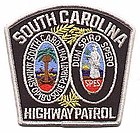
South Carolina Highway Patrol. SCHP’s primary function is the enforcement of traffic laws. It has jurisdiction over all South Carolina state highways, U.S. Highways, Interstate highways in the state and all public roads. Troopers investigate complicated vehicle crashes, using state-of-the-art technology and analysis to reconstruct accident scenes. (Wikipedia)
South Dakota - Tennessee - Texas
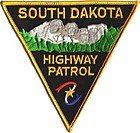
South Dakota Highway Patrol. The SDHP’s 200 Troopers have statewide jurisdiction with the exception of sovereign Native American reservations. It has regional SWAT teams that provide tactical and warrant services to police and Sheriff Departments. The Patrol also trains K9 teams for law enforcement agencies in South Dakota. Troopers provide executive protection for dignitaries, state buildings and grounds. (Wikipedia)

Tennessee Highway Patrol. The THP maintains a Special Operations Section to resolve unusual occurrences. The unit is charged with handling situations outside the typical duties performed by members within the Department. The SOS members facilitate the needs of other enforcement personnel in the completion of specific duty related tasks. This specialized unit is based in Nashville to allow for deployment throughout the State of Tennessee. (Wikipedia)
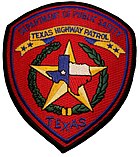
Texas Highway Patrol. The Texas Highway Patrol protects Texas from public safety threats by conducting high visibility patrol; deterrence and interdiction. THP provides statewide emergency response and rescue, and it utilizes advancements in technology to conduct commercial vehicle enforcement operations. The Highway Patrol provides drug and explosive canine detection, tactical marine patrol, dive and recovery operations and the forensic mapping of crash and crime scenes. (Wikipedia)
Utah - Vermont - Virginia - State Police

Utah Highway Patrol. The UHP enforces traffic and criminal laws, and it provides assistance in instances of emergency or disaster. The Patrol’s uniform shoulder patch is unique. It represents a beehive, and it was first worn in 1947. That was one hundred years after the first Mormon pioneers arrived in Utah. To the Mormons, the beehive was a symbol of industry, organization and self-sufficiency. (Wikipedia) (History)
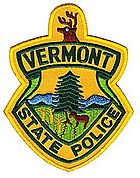
Vermont State Police. The VSP is a full service law enforcement agency. It provides primary police services to approximately 200 towns. That includes 90 percent of the land mass, and 50 percent of the population in Vermont. The specialized resources of the Vermont State Police support local, county and federal partners in times of need. (Wikipedia)
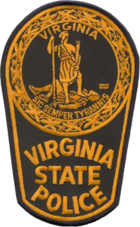
Virginia State Police. The Bureau of Field Operations’ primary responsibility is the patrolling of over 74,000 miles of state roadways and interstate highways. Personnel provide both traffic enforcement and criminal law enforcement. The Commonwealth’s geography and size dictate the need to decentralize uniformed police services into seven field divisions. These divisions are further subdivided into 49 State Police areas that consist of one or more cities and counties. Manpower is allocated based upon workload demands at the city and county level. (Wikipedia)
Washington - West Virginia - Wisconsin

Washington State Patrol. The Field Operations Bureau is comprised of eight districts responsible for traffic law enforcement, collision investigation, and motorist assists. These activities are conducted on 17,524 miles of state and interstate highways. The Commercial Vehicle Enforcement Bureau is responsible for protecting state infrastructure. It enforces size, weight and load laws, ensuring compliance of commercial motor vehicle regulations. (Wikipedia)
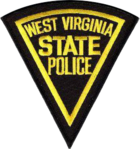
West Virginia State Police. The West Virginia State Police is recognized as the fourth oldest state police agency in the United States. The VSP was formed in 1919, but it was never formally designated as the West Virginia State Police until 1995. It was first designated as West Virginia Department of Public Safety followed by the Division of Public Safety. Everybody referred to the state police as state police, and state government eventually caught up to the citizenry. (Wikipedia)

Wisconsin State Patrol. The WSP enforces traffic and criminal laws; helps motorists in need; inspects trucks, school buses and ambulances. It helps local law enforcement agencies with natural disasters or civil disturbances. WSP conducts criminal highway interdiction programs, oversees motor carrier safety and weight facilities. (Wikipedia)
Wyoming - State Police
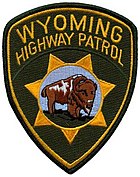
Wyoming Highway Patrol. The WHP K-9 Team consists of twelve canines specializing in either narcotics or explosives detection. Members of the Team are strategically assigned throughout the state to maximize their efforts on state and federal highway systems. They work with local Troopers to reduce and interrupt the trafficking of people and contraband. (Wikipedia)
Related Content for State Police
Advertisements

